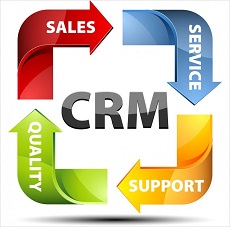
CRM stands for customer relationship management and consists of tools and functions to streamline how businesses interact with existing and potential customers. It is essential today because communication is faster, more direct, and impacts the reputation of businesses across industries. A customer who is not satisfied with a product, for example, will attempt to email or live chat with the business to fix the problem. A delay in responding to that customer can result in an unfavorable post on his personal social media page that will be seen by thousands of people. A quick response can solve the problem and eliminate a bad review.
Efficiency
One of the biggest benefits is the efficiency with which responses to customers can be delivered. An email can be sent to the customer, a text message will reach a mobile phone instantly, or addressing the issue on the social media page of the business allows all customers to see the commitment to customer service. Responses can be automated to increase customer satisfaction and retain loyal customers. More time is spent tracking sales and monitoring digital marketing campaigns than responding to each customer comment.
Lead Generation
Another strong benefit is lead generation. This applies to businesses with physical locations, e-commerce businesses, and those with mobile workforces. Identifying targeted audiences, tracking customer buying histories, and creating a rewards system are all ways to build up a customer base. The information can be analyzed, transferred into reports and graphs, and securely shared with branches, team members, and departments. The use of a SaaS CRM software also creates stronger data security for the files and intellectual property that belongs to the business.
Which CRM Software to Choose?
Some CRM software products and services, such as Salesforce, are favored by large enterprise companies. Unique features like built-in proprietary artificial intelligence give the manufacturer a competitive edge. Other providers, such as HubSpot, offer all-in-one systems that work well with the inbound marketing strategies of small and mid-sized businesses. The selection process is crucial because while all businesses need CRM software, not all businesses need the exact same tools, the extent of support, or a number of computers to benefit from the software.
Comparing
Taking the example of these two products, the points of comparison can be illustrated by noting some differences between hubspot and salesforce. One service is cheaper and will fit into the budgets of more businesses. This is a drastic difference at the beginning. Businesses can upscale HubSpot services as the business grows, which adds to costs. The salesforce product is more expensive after the seven-day free trial because it is designed for large companies.
Both providers offer several features to draw in new customers. The stages and processes for doing so differ, with one product edging out the other one. Automation is sufficient in the market that each product is designed for and will serve businesses well. It is interesting to note that both provide excellent functionality and integrate well with existing business systems.
One product can be set up and implemented quicker than the other. Support services are better with the provider that offers faster setup. The decision comes down to how the business prefers to communicate with customers and what image it wants to project to potential customers.
Selecting the right CRM software to suit the business needs, size, budget, and goals will result in better sales performance, increases in revenue, and a steady stream of new customers. Factors such as features, costs, support, and setup should be compared among at least a few products before one is chosen to move the business forward and help it thrive in a competitive global economy.






